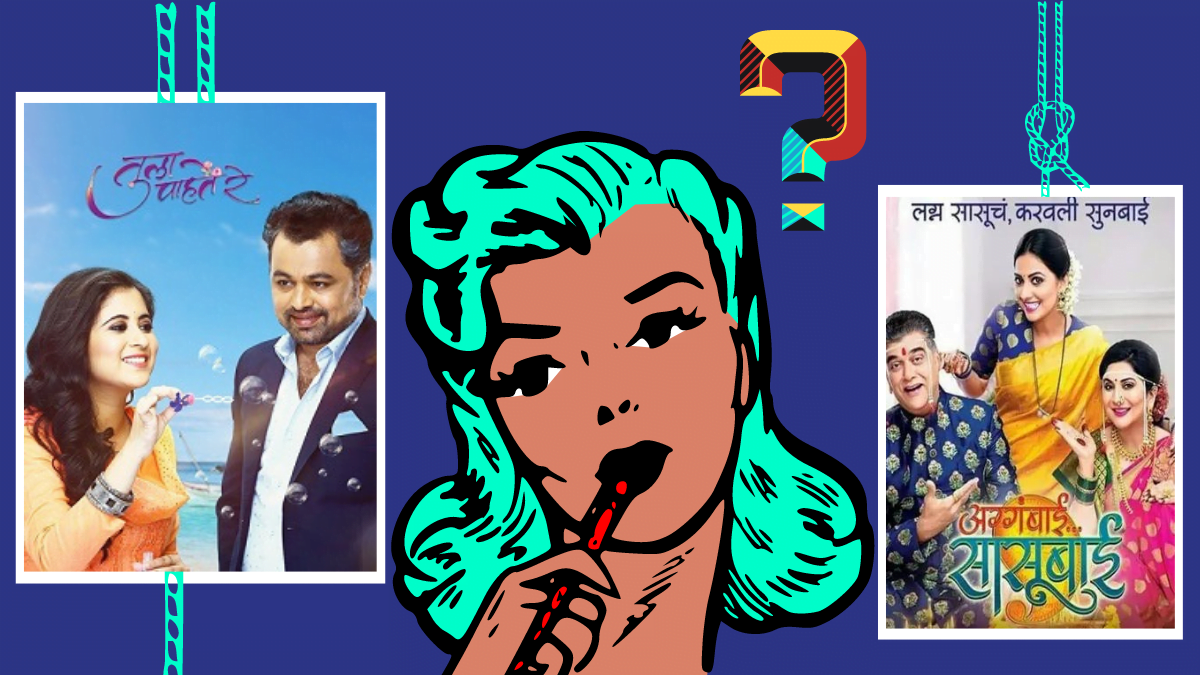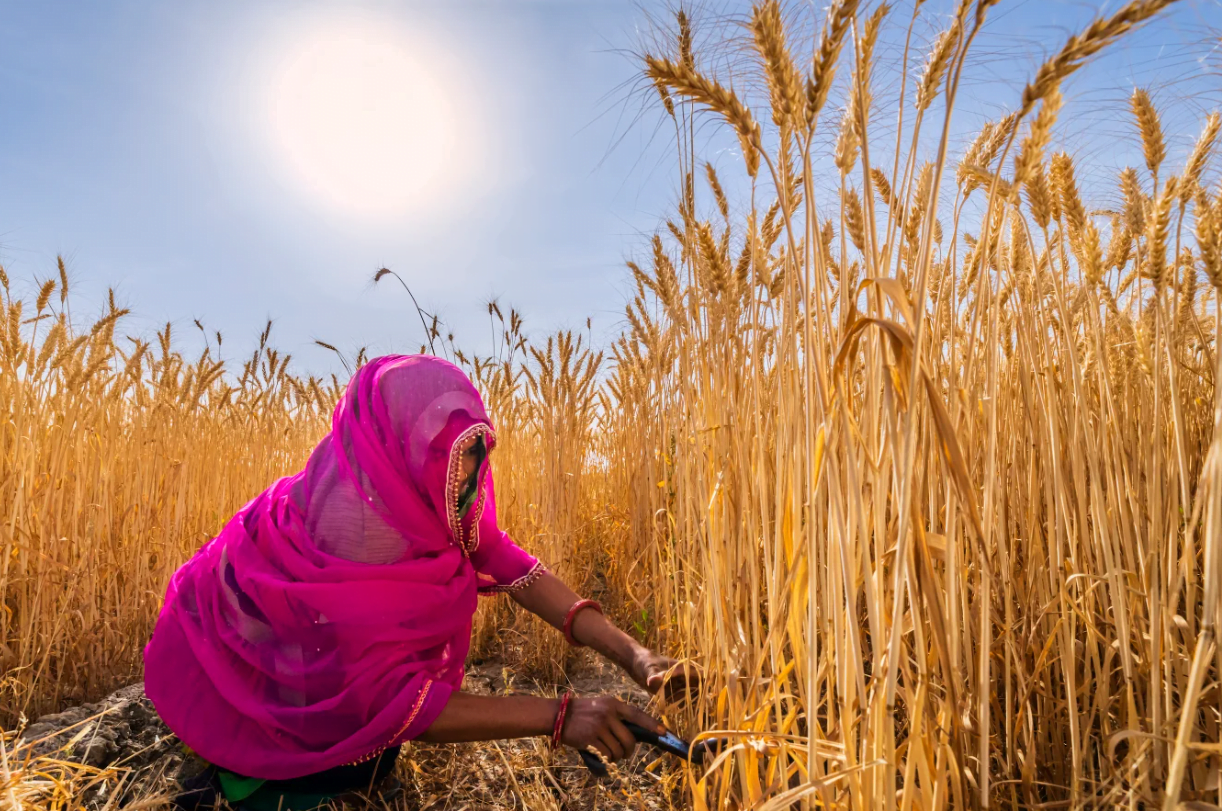One can argue that Marathi television industry has improved in terms of content recently. Most of the famous mainstream TV serials on Marathi channels are based on women-centric topics which are different from the stereotypical saas-bahu drama. Themes of some of the most popular serials since last two years are:
- Tula Pahte Re: a lower middle class young woman exposes a billionaire businessman who got rich by luring a rich woman in his honeytrap and killing her
- Agabai Sasubai: a widowed middle-aged woman with extraordinary cooking skills finds love again and starts her own hotel business with the help of her daughter-in-law and second husband, while dealing with her toxic-man-child of a son
- Majhya Navryachi Bayko: a housewife gets divorce from her cheating husband and starts her own business endeavour while also teaching a lesson to him with the help of his second wife
- Rang Maaza Vegla: a middle class young woman with dark skin finds the root of her mother-in-law’s colourist mindset caused by childhood trauma, and tried to resolve it
- Laagira Zaala Ji: a young rural woman falling in love with a military officer, their love story, family issues and married life in rural Maharashtra
- Molkareen Bai-Mothi Tichi Savli: an attempt to portray the lives of domestic service providers in Mumbai through a fictional story
- Aai Kuthe Kay Karte: how an overly underappreciated housewife gets her self esteem back after knowing that her husband cheated on her
- Maaza Hoshil Na: love story of a rich young woman and a young man raised by five single men with no experience with women
- Vaiju Number One: a newlywed young woman reforms the chawl she’s shifted to
- Mrs. Mukhyamantri: an independent young woman loves and marries a politician’s son and “helps” him become the CM of Maharashtra
- Sundara Manamadhye Bharli: a small-town woman with more than average weight and a gym-freak man get married unwillingly under unusual circumstances and try to make an agreement (the first attempt at tackling body shaming and beauty stereotypes in Marathi television)
- Ratris Khel Chale: season 1 – story based on how a scientist tries to fool her superstitious rural in-laws to get hand at their property; season 2 – a portrayal of the tyrant landlord and his downfall
All of them start with interesting teasers and scripts in the beginning, and later lose the essence as usual.
Who Tells the Story and Who is the Audience?
That’s really an interesting question. The storylines of almost all the TV soaps revolve around the rich and the upper-castes. If the it’s an urban story, the main characters/families are Brahmins and if it’s rural, it mostly involves Maratha community. Molkareen bai and Vaiju number one are exceptions; but even there, there is absolutely ZERO mention of caste-based diversity and oppresion.
These stories revolve around various permutations and combinations of rich, middle/lower-middle class Brahmin and Maratha families. And there’s always a rich connection—even if the story starts with a lower/middle class protagonist, they eventually love/marry a higher class character that too, within the same caste. Looking at the population of these two groups (less than 8% Brahmins and 30% Marathas), we can say that the rest 60% of the Maharashtrian domiciles just can’t relate to most of the daily-soap content.
The serials don’t show a single household—not even among the neighbours—with a photo/idol of non-Hindu religious/cultural identity (except for Laagira zala ji, where the protagonist’s friend is Muslim). Zero representation for the Dalit-Adivasi-Ambedkarite communities in stories based in all classes and regions, though they’re very much present in the state. The surnames of neighbours and acquaintances too, belong to the same community/class-caste backgrounds within a serial. There’s no mention of lower caste colonies in the outskirts of villages or ghettos in cities; it’s as if, the reality of caste does not exist in the realm of TV serials.
Zero representation for the Dalit-Adivasi-Ambedkarite communities in stories based in all classes and regions, though they’re very much present in the state. The surnames of neighbours and acquaintances too, belong to the same community/class-caste backgrounds within a serial.
The symbolism around rituals-festivals-deities is also very typical—stories with Brahmin characters focus more on Ganpati and the festival of Manglagaur, while the others show Vittal/Amba Bai and related rituals.
This was the exact point Director Sujay Dahake was making when he pointed out the caste-exclusive nature of Marathi TV industry, but the industry in question outright denied his claims, rather, bashed him heavily. The backlash he had to face for stating the reality itself is a huge indicator of how sensitive the topic of representation is in this upper-caste dominated industry.
The reality of gender-diversity too, is non-existent. It’s too much to ask for a healthy and open conversation about even cis-heterosexuality, then we can’t even imagine LGBTQIA representation.
Also read: New Marathi Cinema Can Afford Modern Heroines, But Not Feminist Ones
Strengthening Stereotypes in the Name of Breaking Them
They all follow one common fundamental rule—every protagonist HAS to fall in love/get married as per the heteronormative standards at some point in the serial. The serials that started with “we’ll teach toxic characters a lesson” eventually end up showing the same toxic traits repeatedly.
Even in the portrayal of independent women, their business endeavour is limited to the food/fashion industry (Radhika Masale, Annapoorna, Sumi chi khanaval-lunch home). Their dialogues sound too lame for their characters—written often by male writers, or highly patriarchal women writers, they often sound cringily submissive. Also, the independent woman has to be a good girl—polite, taking proper care of everyone and doing her familial duties with unconditional ‘love’—only then she’s acceptable.
Whenever there is a toxic character (mostly a man) or an issue within the family, it’s always the newly arrived daughter-in-law that fixes them—as if the only purpose of her existence is to be an endless caregiver and problem solver for her in-laws, and others have no duty towards their OWN problems and family. Glorification of the socially enforced duties done by women in TV serials makes the audience believe that it’s a portrayal of women empowerment; while in reality it actually damages the narrative of gender equality and teaches all the wrong things to public.
Also read: Marathi Film Nude Puts The Viewer Under Scrutiny, Not The Art
Basically, while watching this content, the viewers have to be very careful about what their takeaway message should be. It is very irresponsible of the makers to leave this tricky decision to the audience rather than doing some basic research or giving a thought about how it’ll impact the society, BEFORE writing the stories. This will be resolved only when the industry has proper representation, actual care for talent and pure intentions of reforms, rather than just thirst for TRP.




